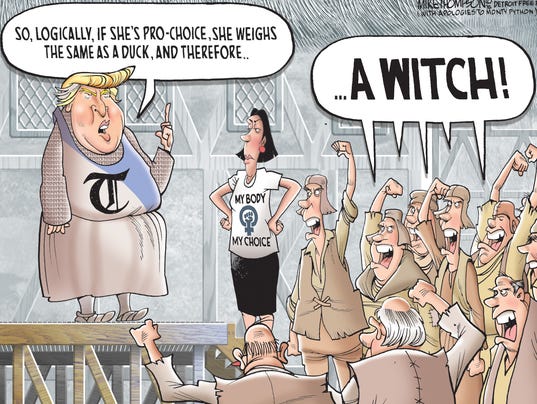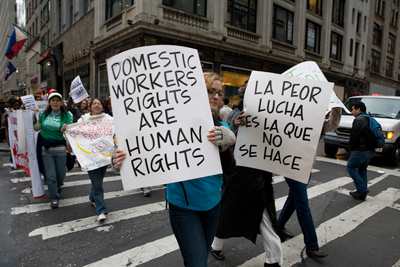
On Sunday, November 15, 2016, six days after winning the presidential election, Donald Trump appeared on 60 Minutes. The entire hour was devoted to interviewing Trump and his family. During the course of the interview, President-elect Trump seemed to soften the incendiary rhetoric that had helped spur him to victory over Secretary Clinton. During the interview, Leslie Stahl asked the President-elect to speak to several of his more strident claims on the campaign trail. Many of those claims he still endorsed – he still plans to build a wall, or maybe more like a fence, on our southern border. Some he seemed to take a step back from – he made no comment on naming a special prosecutor to bring a case against Clinton once he’s in office.
Many who watched the interview hoped that this marked a “new” phase in Trump’s rhetoric – an era in which he’s more measured and not so unguardedly hateful in his assertions. With regard to post-election hate crimes, Trump even told his violent supporters to “stop it.” Meanwhile, reports began circulating about his appointment of Steve Bannon as Chief Strategist in his cabinet. An anti-Semite with ties to the so-called alt-right, Bannon’s appointment seemed to undercut any balance Trump may have been trying to achieve through his rhetoric. We can see a fairly clear disconnection between Trump’s appointment of Bannon (which has already been lauded by the KKK) and his attempt to appear broadly presidential on 60 Minutes. In light of this, why should the injunction to “stop it” be taken any more seriously than the broad pivot?
Rather than “softening” or moving toward conciliatory rhetoric, Trump’s rhetoric is a way of “selling” himself to particular audiences. During the campaign it was a means to sell a vision of “Making America Great Again.” That vision places minorities in the crosshairs in the name of salvaging the American Dream. During the 60 Minutes interview, Trump’s rhetoric was a means of selling himself to America as presidential, which involved fewer ad hominems and more conciliatory language. In both of these instances, Trump’s rhetoric is not supported by his ideology or policy plans. Instead, like any good salesman, Trump sells a vision of America or a President-elect that will connect to the particular audiences to whom he is speaking at any given moment.
Trump’s rhetoric is not without precedent. The branding of particular minority groups as threats to the nation has been a rhetorical mainstay of the Republican Party for the last several decades. The GOP has typically mobilized these arguments around policy at the state level. For example, in 1994 in California, a group of citizens led by then-State Rep. Darrel Issa (now a U.S. Congressman, R-CA), put forward an initiative to criminalize immigrants and ban them from receiving any kind of state services, including medical treatment. Although the California Supreme Court ultimately deemed this law unconstitutional, it did pass and spawned media coverage that branded immigrants as thieves stealing jobs and encroaching on Californians’ way of life.
Similar claims about immigrants as thieves began the conversations around Arizona SB 1070 in 2010. This time, immigrants were not merely characterized as thieves, but criminals who disrupt the nation with their criminal acts. SB 1070 passed, and later that year Alabama passed a similar bill. Under the terms of these laws, not only was undocumented status a felony, but the police could stop individuals if they simply “looked like immigrants.” The U.S. Supreme Court threw out some stipulations in both the Arizona and Alabama laws, primarily the parts that seemed to coincide with racial profiling, but most of the restrictions of both bills still stand.
In all three instances, the GOP’s rhetoric worked to sell immigrant communities as a direct threat. By naming immigrants as the ones who are responsible for taking our jobs and creating danger in our communities, the GOP stimulated the electorate to vote for these stringent laws. In the 2016 election, Trump used much of the same rhetoric in connection to immigrants, during his rallies and in Cleveland. He named Muslims as terrorists and Latino immigrants as criminals and responsible for job loss across the U.S. What is unique about Trump’s rhetoric is that he has moved the process of branding immigrants as threats to the national stage and used this narrative as a means to stimulate his base, not to forward policy.
Without a clear legislative agenda, Trump’s rhetoric sells the threat of minorities without any concrete plan in response. His rhetoric works to sell his vision of America on the backs of our nation’s most vulnerable groups. Although not all Trump supporters have acted violently against minority groups, we have seen at least 315 reported and confirmed incidents of violence against immigrants, women, people of Jewish faith, and the LGBT community since the election. These minority groups are left vulnerable because Trump has sold them as “road blocks” to the “great America” and some of his supporters feel that they must be dealt with, one way or another.
What is happening to Trump’s rhetoric now that he is facing questions of policy and the realities of governance? As he leaves the rally and enters the Beltway, his ad hominem attacks on minorities are changing, and his rhetoric seems to be softening. Again, this isn’t because his ideological commitments are changing, but because the audiences to which he must speak are. For example, Trump campaigned that he would “overturn gay marriage.” When asked about that on 60 Minutes, he was clear: “That law is settled. It is done.”
Many media outlets report this as Trump’s attempt to unify the country. The appointment of Bannon shows that that is not Trump’s priority. Instead, his change in rhetoric reveals what happens when Trump learns about the processes of governing and Jenn takes on the role of President-elect. His vitriolic claims against marginalized people will seem to evolve. Will these shifts translate into policy? At this point, it is not looking good. With President-elect Trump, you cannot predict his policy from what he says, no matter how often he tells you he’s a straight shooter.
(Image Credit: Detroit Free Press / Mike Thompson)
